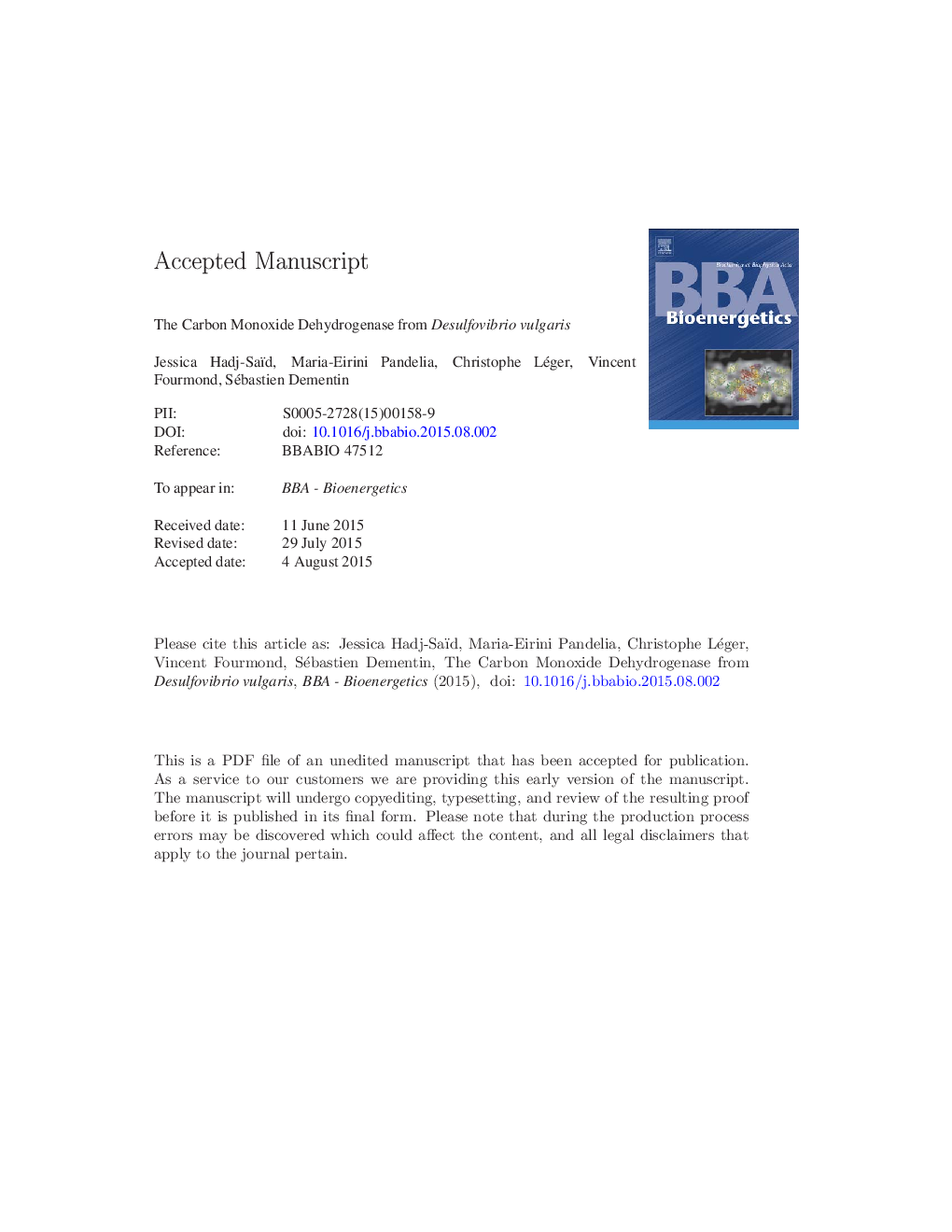| Article ID | Journal | Published Year | Pages | File Type |
|---|---|---|---|---|
| 1942079 | Biochimica et Biophysica Acta (BBA) - Bioenergetics | 2015 | 29 Pages |
Abstract
Ni-containing Carbon Monoxide Dehydrogenases (CODHs) catalyze the reversible conversion between CO and CO2 and are involved in energy conservation and carbon fixation. These homodimeric enzymes house two NiFeS active sites (C-clusters) and three accessory [4Fe-4S] clusters. The Desulfovibrio vulgaris (Dv) genome contains a two-gene CODH operon coding for a CODH (cooS) and a maturation protein (cooC) involved in nickel insertion in the active site. According to the literature, the question of the precise function of CooC as a chaperone folding the C-cluster in a form which accommodates free nickel or as a mere nickel donor is not resolved. Here, we report the biochemical and spectroscopic characterization of two recombinant forms of the CODH, produced in the absence and in the presence of CooC, designated CooS and CooSC, respectively. CooS contains no nickel and cannot be activated, supporting the idea that the role of CooC is to fold the C-cluster so that it can bind nickel. As expected, CooSC is Ni-loaded, reversibly converts CO and CO2, displays the typical Cred1 and Cred2 EPR signatures of the C-cluster and activates in the presence of methyl viologen and CO in an autocatalytic process. However, Ni-loaded CooSC reaches maximum activity only upon reductive treatment in the presence of exogenous nickel, a phenomenon that had not been observed before. Surprisingly, the enzyme displays the Cred1 and Cred2 signatures whether it has been activated or not, showing that this activation process of the Ni-loaded Dv CODH is not associated with structural changes at the active site.
Keywords
Related Topics
Life Sciences
Agricultural and Biological Sciences
Plant Science
Authors
Jessica Hadj-Saïd, Maria-Eirini Pandelia, Christophe Léger, Vincent Fourmond, Sébastien Dementin,
